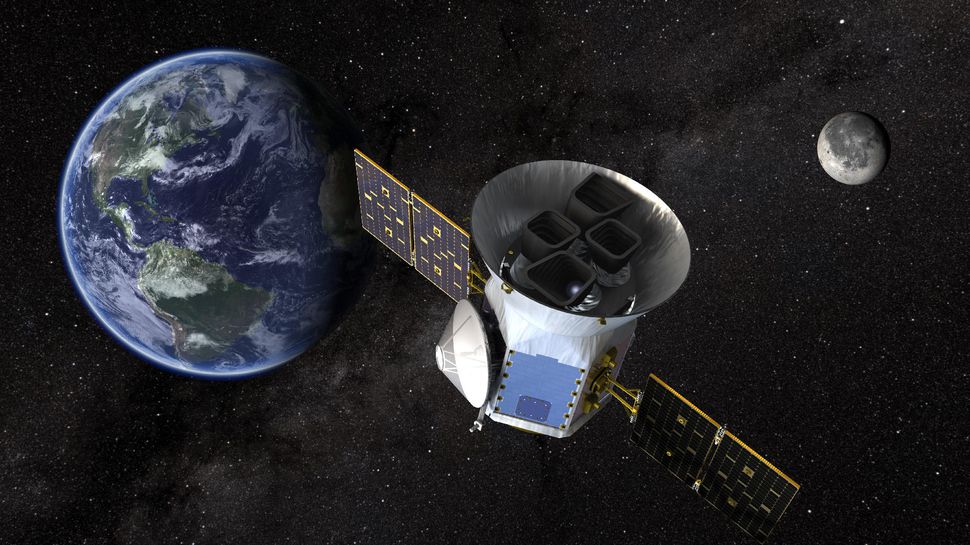The Transiting Exoplanet Survey Satellite tv for pc (TESS), NASA’s latest planet-hunter, simply hit one other milestone: It has found its first exoplanet.
On Monday, NASA shared the space telescope’s ‘first light’ data, revealing a whole lot of 1000’s of stars within the southern sky that it has set it sights on and confirming that, sure, issues have been working as they need to be. Meaning TESS can focus its 4 cameras on stars, searching for slight dips in brightness which suggests a planet might have been ‘transiting’ across the star.
It appears that evidently knowledge was solely an appetizer although, as a preprint paper uploaded to the arXiv server on Sunday suggests TESS has already discovered its very first planet: a super-Earth orbiting the star Pi Mensae (π Men), almost 60 mild years away. NASA’s TESS Twitter account introduced the invention on Wednesday, however stated discovery nonetheless must be reviewed earlier than it’s validated.
The @NASA_TESS workforce is happy to announce the mission’s first candidate planet — a super-Earth across the brilliant star Pi Mensae, almost 60 light-years away. The planet orbits each 6.three days. The invention is now being reviewed by different scientists to validate it. Keep tuned!
— NASA_TESS (@NASA_TESS)
If the information is validated, the brand new super-Earth, which was dubbed ‘π Males c’, will go down as TESS’s first discovery on its two-year mission to search out Earth-like exoplanets round close by stars. Its orbital interval is simply 6.three days lengthy.
And the brand new super-Earth is not alone. One other planet often called ‘π Males b’, about 10 occasions the dimensions of Jupiter and with an orbital interval of better than 2,100 days, additionally calls Pi Mensae house.
However wait, there’s extra. Actually: Extra new exoplanets!
A second prepint paper, uploaded to arXiv on Wednesday, means that TESS might have already positioned an ‘ultra-short-period planet’ across the M dwarf LHS 3844. That star is just a little nearer than Pi Mensae, at a contact below 49 mild years away. Presently dubbed ‘LHS 3844 b’, the planet zips round its star with an orbit taking simply 11 hours. It’s possible extremely irradiated and thus wouldn’t have an environment, however these assumptions will must be examined with spectroscopy. Furthermore, the analysis workforce cautions that it might really be orbiting a low-luminosity secondary star.
The information will must be validated earlier than the exoplanet is formally added to our ever-expanding listing of close by celestial our bodies. Each observations got here through the TESS Alerts system, which is presently in beta, and permits TESS scientists to follow-up on planet candidates earlier than the primary TESS knowledge launch in January 2019.
What’s most mind-boggling is that TESS has solely simply begun its mission. The house telescope launched on the back of a SpaceX Falcon in April and formally started observations in July. What wonders nonetheless await? What number of exoplanets will we discover?
TESS is simply the beginning of research for a lot of of those exoplanets and the information it offers permits scientists to dig just a little deeper, revealing extra in regards to the planets they discover utilizing spectroscopy. If the primary month is something to go by, an inflow of exoplanet knowledge will begin to filter out from the spacecraft because it continues to map the southern sky, trying to find planets.

